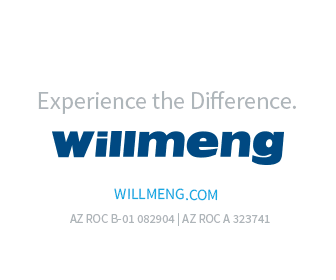The Mezzanine Structured Finance Market is Here to Stay

This popular investment tool that arose in the 1990s can offer notable advantages over other financing practices.
Real estate mezzanine financing was first implemented in the early 1990s to augment the commercial mortgage-backed securities (CMBS) markets. Since that time, it has continued to evolve and grow, and today it is a staple of commercial real estate finance.
Mezzanine financing provides supplemental proceeds and can take many forms, but it is generally collateralized by the equity interests of the entity owning the real property.
While mezzanine financing had been widely used in corporate finance for decades, its emergence as a significant component of real estate finance is a more recent evolution. As senior lenders found themselves subject to bankruptcy cramdowns from permitting secured secondary debt, the market shifted to mezzanine financing, which is classified as unsecured debt since there isn’t a secondary lien on real property. As mezzanine loan collateral is technically secured by a pledge of the owners' or borrowers’ interest as opposed to a secured real estate lien recorded by a deed of trust, the format eliminates the senior lender’s bankruptcy exposure.
Initially, many mezzanine lenders were unfamiliar with the Uniform Commercial Code foreclosure process, but with experience from the 2008-2009 financial meltdown, they have come to appreciate the relative simplicity and established legal procedures for mezzanine enforcement. In many states, it is faster and more efficient than judicial foreclosures on senior loans.
Real estate capital markets evolved since the financial crisis through the addition of financial regulations. Other forms of secondary financing arose to meet senior lender and rating agency policies. What once would have been categorized as mezzanine financing has morphed into a wide array of structured finance practices.
The Mezzanine Advantage
From the borrower/sponsor perspective, mezzanine financing provides additional capital proceeds beyond a senior lender’s loan, typically at rates cheaper than equity costs. Consequently, these augmented loan proceeds require less project equity. That allows the sponsor to substitute expensive equity for more cost-effective mezzanine capital, which lessens the need for equity capital partners.
Furthermore, if the sponsor can maintain the controlling interest in the equity, there’s more operational and decision-making freedom, particularly on major decisions like refinance or sale that can be encumbered by equity partnerships.
Mezzanine finance is a viable alternative to equity for property acquisitions, refinance and development. It’s generally viewed as cheaper and more flexible than equity, but given its cost and priority repayment position, it can also negatively impact equity returns if unforeseen delays in executing the business plan defer the income necessary to service higher debt proceeds. Consequently, sponsors who are confident in their ability to successfully execute their business plans often prefer mezzanine, while more wary sponsors prefer the safety net of equity.
Increasingly, sponsors are tapping equity in existing assets that have increased in value via various structured finance options, which enables them to access imbued equity tax free and replace it with lower-priced mezzanine financing. This strategy frees capital for other endeavors.
Senior Lender Perspective
Not surprisingly, senior lenders have varying attitudes toward mezzanine loans. Banks in particular can be opposed to anything that might adversely influence their borrowers and collateral.
However, more banks are realizing that both mezzanine loans and preferred equity are necessities given their generally more conservative underwriting guidelines, which limit construction loan proceeds. The increased regulatory environment, implementation of high-volatility commercial real estate (HVCRE) requirements, as well as portfolio management considerations, have combined to constrain construction loan proceeds generally to 55%-65% loan to cost (LTC). While these constraints vary among construction lenders, more developers want to provide resource guaranties, which has also resulted in lower construction loan proceeds. Consequently, the need for capital to bridge the gap has significantly increased.
Most banks, however, remain cautious about secondary financing, especially if it has loan characteristics and might impact their HVCRE calculus. Their preference is usually for supplementary capital to be invested as preferred equity. These agreements typically would not include any security interest in the ownership interests nor capability of enforcement, which could impair their borrower. Subordinate investors generally prefer collateral interest via a pledge of ownership, as well as the right to assume the senior construction loan in a default.
CMBS Lenders
CMBS lenders are generally the most mezzanine-friendly lenders and have well-established guidelines governing participants’ rights and remedies via standardized intercreditor agreements and rating agency guidelines. Since CMBS loans are designed to have different classes of lenders/bond holders, it’s not surprising that this vehicle can permit numerous additional classes of investors.
Smart borrowers will demand future flexibility to bring in additional capital providers, particularly for longer-term loans. This allows them to tap into and replace equity as the underlying property increases in value.
Foreign Providers
Foreign investors are among the fastest-growing providers of mezzanine capital. Many of them see mezzanine investment as a defensive play given the nature of the subordinate equity. They are attracted by both the strong risk-adjusted returns as well as favorable tax treatment under the Foreign Investment in Real Property Tax Act of 1980 (FIRPTA), whereby interest payments aren’t taxed as equity dividends. The resulting higher effective yields, which they see as insulated by the sponsors’ subordinated equity, are highly attractive to foreign capital.
Asian investors, particularly from South Korea and Japan, have become active participants in the U.S. mezzanine market.
Debt Funds
The rapid expansion of the debt fund market has added an additional source of subordinate capital designed to exploit the void provided by the more conservative bank lending environment.
Debt fund capital is generally positioned to provide a “one-stop” shop for borrowers looking for a single lender to provide higher loan proceeds beyond typical bank insurance company underwriting. As opposed to a borrower targeting maximum loan debt, funds typically have the capacity to take down the entire loan themselves.
This alternative can be cheaper, and it lessens the arduous closing process necessitated by multiple lenders needing to agree on intercreditor terms. However, despite a more efficient closing, ongoing loan administration and servicing can get more complicated should the debt fund sell positions and/or finance its position post-closing.
Final Analysis
The continued growth and acceptance of both mezzanine and preferred equity capital has expanded sponsor financing alternatives with additional flexibility for borrowers.Overall, this has given sponsors more choice, proceeds and flexibility in their project capitalization. However, as the choices and participants expand, so do the complexities and unknowns; particularly as many of the capital providers are new to this approach and might not have lending experience or operational capabilities.
As more lenders with more complex capital structures flood the market, it’s important that borrowers actually know and understand who they’re doing business with as well as the breadth of their experience and capabilities. While each real estate asset has a business plan and environment, the flexibility offered through structured finance can be a viable alternative for sponsor’s capitalization plans.
Tom McCahill is executive vice president of structured finance for EverWest Real Estate Investors in Denver.







